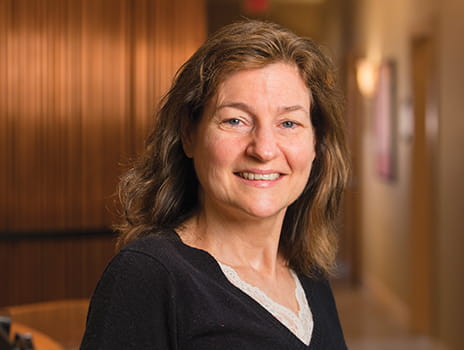GPS-like Tracking Allows Closer Look

In recognition of the upcoming Martin Luther King Jr. Day holiday, some of The University of Kansas Health System’s offices will have modified hours on Monday, January 19.
The University of Kansas Health System is experiencing a high volume of patients seeking care for influenza and other respiratory illnesses. Whether you plan to visit the health system or not, learn how to keep yourself healthy.

October 17, 2018
Just moments before her heart procedure, Sarah Howard found out that she would be the first patient in the United States to undergo a procedure with MediGuide™ technology at The University of Kansas Health System. While most people would be nervous, maybe even anxious, Howard was excited.
"I felt like I'd won the lottery."
That morning, she was being treated for supraventricular tachycardia, or SVT – a condition that causes a rapid heart rhythm. Howard's heart rhythm condition had required her to have a similar treatment 2 years earlier.
Electrophysiologists treated Howard's heart rhythm condition using what was, at the time, the standard of practice for navigating the heart. That process, called fluoroscopy, relies on a series of rapid X-ray images taken throughout the procedure to help physicians find the damaged area of the heart and treat the heart tissue causing the abnormal rhythm.
Fluoroscopy, however, results in relatively long periods of radiation exposure for both the patient and the care providers. It takes between 15 minutes to 1 hour or more for complex procedures.
When Howard learned she would need another procedure, she hoped to avoid the risk of long-term effects from radiation. She has a history of breast cancer in her family. She was the first of more than 800 patients treated with ablation each year to be given that choice.
The MediGuide technology from St. Jude Medical, Inc., is a GPS-enabled tool that works similarly to the global positioning system in your car. Using electromagnetic signals to track tiny sensors embedded in catheters and other devices, MediGuide creates a GPS universe within the body.
With it, physicians see where the catheter is in real time and can map the route to the heart on a 3D image that uses an X-ray image as a base map. Because the X-ray equipment does not run continually throughout the procedure, exposure to radiation is dramatically reduced by 15-90%.
For Howard, whose procedure was about an hour long, MediGuide reduced her exposure to radiation from 20 minutes to less than 2 minutes.
Howard truly appreciates that. "Being a nurse, I know what good care is," she says. "The University of Kansas Health System delivers excellent patient care."
Being a nurse, I know what good care is. The University of Kansas Health System delivers excellent patient care. – Sarah Howard